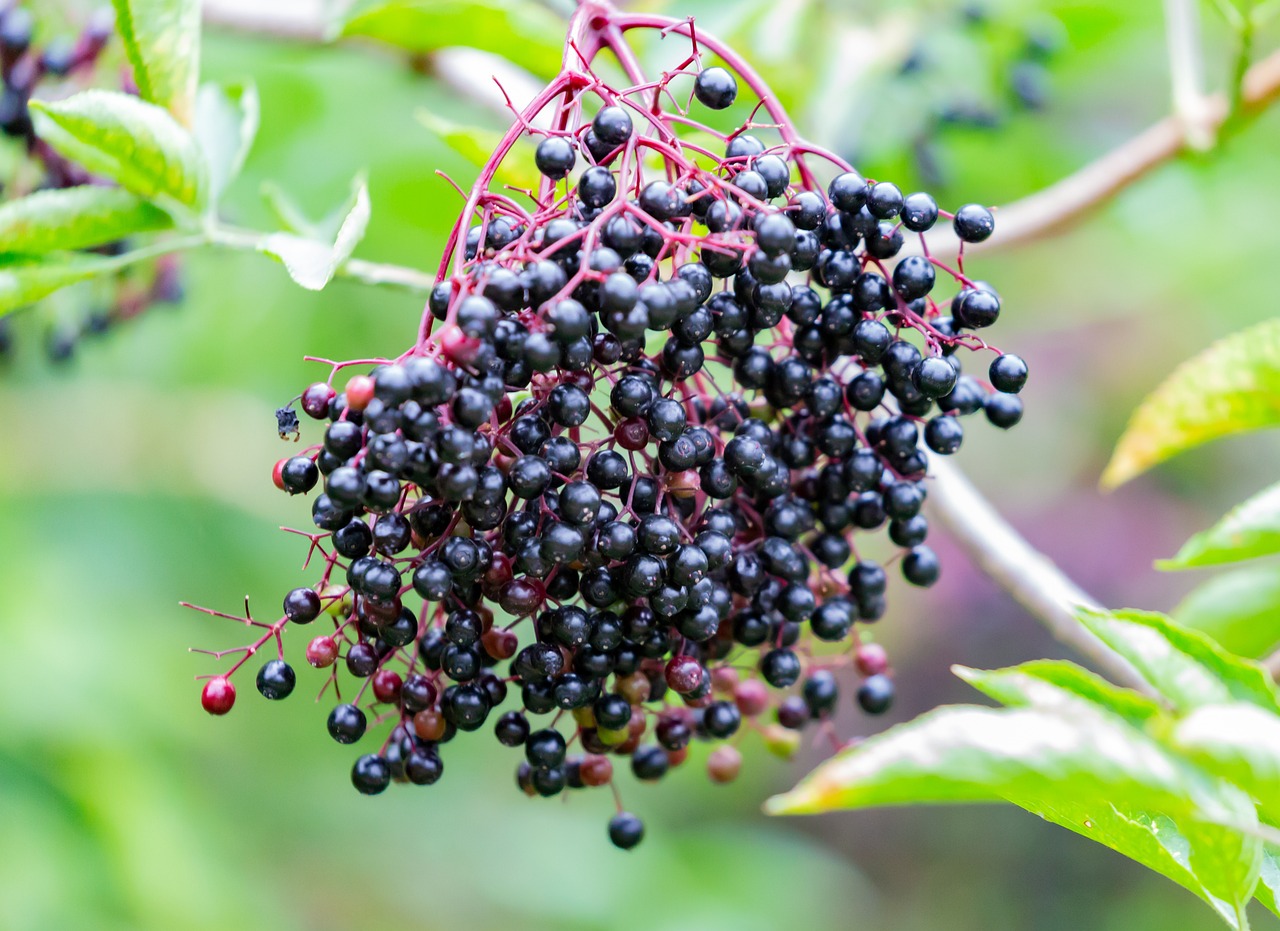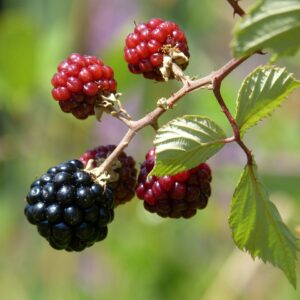The elderberry plant (Sambucus nigra) is a deciduous shrub or small tree that can reach heights of 10 to 20 feet. They’re known for their potential health benefits, including immune-boosting properties, and are sometimes used as a remedy for colds and flu. However, raw elderberries and other parts of the elder tree can be toxic, so it’s important to cook them before consuming. Elderberry plants are often found in hedgerows, along roadsides, or in moist, open areas. They’re valued not only for their medicinal uses but also for their attractiveness to wildlife.
Leaves: The leaves are pinnately compound, meaning they have multiple leaflets arranged along a central stem. They are typically 5 to 11 leaflets per leaf, with each leaflet being lance-shaped and serrated along the edges. The leaves are dark green and turn yellow in the fall.
Flowers: Elderberry plants produce large, flat-topped clusters of tiny, creamy white or pale yellow flowers. These flower clusters, known as umbels, appear in late spring to early summer. They have a strong, sweet fragrance.
Berries: After the flowers, the plant produces small, round berries that start out green and turn dark purple or black when ripe. The berries grow in dense clusters and are about ¼ inch (6 mm) in diameter.
Branches and Bark: The branches are typically grayish-brown and can be hollow in the center. The bark is rough and often has a distinctive, ridged texture.
Overall Shape: The plant has a bushy, somewhat rounded shape with a dense canopy of leaves. It often grows in clusters and can spread widely.


